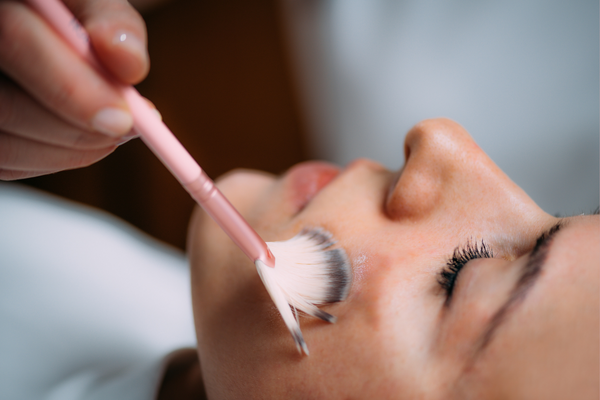
Hyperpigmentation is a common and harmless condition characterized by darker patches of skin. It can be caused by everything from sun overexposure to pregnancy, and unless there’s an underlying cause, there’s nothing to be concerned about. If hyperpigmentation occurs on exposed areas of your body, you may be wondering how to get rid of it. There are quite a few natural hyperpigmentation remedies you can try. Check them out below!
What is Hyperpigmentation?
Hyperpigmentation is a condition where patches of the skin become darker than your natural surrounding skin tone. Extra melanin can create spots that look brown, black, grey, red or pink that are typically harmless but can cause people to feel self conscious. It can affect the skin colour of people of any race, but is more common on skin of colour as darker skin tones already have a higher melanin content. There are three main types of hyperpigmentation:
1. Age spots (also called liver spots): brown, tan or black spots
2. Melasma: large patches of darkened skin
3. Post-inflammatory hyperpigmentation: spots or patches of darkened skin
Each type of hyperpigmentation is commonly found on the face but can affect other areas of the body as well, and they all have different causes.
What Causes Hyperpigmentation?
Hyperpigmentation can be caused by various things. Age spots are commonly found on the face and hands and appear on the skin due to sun overexposure. They can also be found on sun-exposed areas of the body and are typically found on older adults or those with extended sun exposure. Melasma, often called the mask of pregnancy, is typically found on the forehead, face and stomach. It’s usually caused by pregnancy or the birth control pill. Hyperpigmentation can also appear after an inflammatory skin condition such as eczema or acne that leaves spots or patches of darkened skin.
In some instances, hyperpigmentation may be a sign of an underlying condition, including hormonal imbalances, insulin resistance, direct trauma from an accident, or cancer or cancer related treatments, such as chemotherapy. Hyperpigmentation itself does not pose any risk to the body, however if there’s an underlying condition, it may require proper treatment.
4 Hyperpigmentation Signs and Symptoms
1. Patches of varying shades that are darker than your natural skin tone
2. Discolouration after inflammation or injury to the skin
3. Discoloured patches that turn darker after sun exposure
4. Raised dark patches growing in size
When to See a Doctor
Visit your dermatologist when you first notice hyperpigmentation so that they can properly diagnose you and help you determine the causes of your hyperpigmentation. If hyperpigmentation does not respond to any home remedies, see your doctor for alternative treatment. Treatment will depend on any underlying cause and may include laser resurfacing, chemical peels, microdermabrasion or cryotherapy. Other than dark spots, hyperpigmentation doesn’t cause any other symptoms. See your doctor if you have spots on your skin with any other symptoms.
7 Natural Hyperpigmentation Remedies
1. Apple Cider Vinegar
Apple cider vinegar contains acetic acid, which may help to lighten pigmentation, acting as a mild chemical peel in some cases. It also contains polyphenols, which act as antioxidants and may protect the skin cells. Apply 1 part apple cider vinegar, 1 part water to the pigmented areas and leave on for 2 to 3 minutes. Rinse the area thoroughly with warm water and repeat twice daily. Stop this treatment at any sign of irritation.
2. Aloe Vera
Aloe vera can help lighten pigmented skin over time. It contains aloin, a natural depigmenting compound that has been shown to lighten skin and work effectively as a nontoxic hyperpigmentation treatment. Apply pure aloe vera gel to affected areas before bedtime. Rinse using warm water the next morning and repeat daily.
3. SPF
Wearing sunscreen everyday is a must for everyone, but especially if you have hyperpigmentation. It’s essential you protect your skin from sun damage and further pigmentation. Apply sunscreen every morning, no matter if it’s sunny, raining or cloudy. Reapply as needed throughout the day and ensure it’s SPF 30 or higher.
4. Vitamin C
Vitamin C rich foods, such as grapefruit, lemon and papaya may be effective home remedies for hyperpigmentation. Applying them to the skin can help increase the antioxidants on the surface and lighten the cells over time. Combining vitamin C with other home remedies for hyperpigmentation has virtually no side effects and will likely increase its effectiveness.
5. Red Onion
Red onion can be a helpful skin whitening agent for some people. Isolates from red onion have been found to block the cell action that leads to excess pigmentation. It’s also an antioxidant and is an excellent source of vitamin C. Cut a red onion, take a slice and rub it on the affected areas of your skin. Let the onion juice rest on your skin for 10 minutes, then rinse with lukewarm water. You can also look for creams that contain Allium cepa.
6. Orchid Extract
Orchid extract has been found to be just as effective as vitamin C as a hyperpigmentation remedy. The magnesium within orchids helps to even out dark spots, reducing pigmentation and supporting the regeneration of skin cells. Use it for about 8 weeks to see results. You can find orchid extract in skin products like masks and creams.
7. Yogurt or Milk
Yogurt and milk both contain lactic acid, a common ingredient in chemical peels for the skin. Although it’s found in small quantities in these foods, it may still help with mild hyperpigmentation. Apply yogurt to the pigmented area, or soak a cotton ball in milk and apply it. Let it sit for a few minutes, then rinse the area thoroughly and apply moisturizer. Repeat the process two times a day.
If you’ve noticed hyperpigmentation on your skin, try out these home remedies to see if they work for you!
